Angel Fish Pterophyllum Scalare Mix Randomly Selected Size 1-2 Cm Angelfish, Stunning Tropical Fish for Freshwater Aquariums – Ideal Companions for Peaceful Community Tanks, Beautiful Additions to Your Tank
£3.49 Original price was: £3.49.£2.91Current price is: £2.91.
Welcome these beautiful Angel Fish (Pterophyllum scalare) into your freshwater aquarium, where their stunning colors and graceful movements will enhance your aquatic landscape. Perfect for peaceful community tanks, they thrive in well-maintained environments, creating beauty and tranquility.
777 in stock
Species Introduction
The Angel Fish, scientifically known as Pterophyllum scalare, belongs to the family Cichlidae and is a stunning addition to any freshwater aquarium. Originating from the Amazon River basin in South America, these fish thrive in slow-moving waters, often found in flooded forests and lakes. Their natural habitat consists of dense vegetation, which provides shelter and breeding grounds. The Angel Fish is known for its graceful swimming patterns and elegant fins, making it a favorite among aquarists. With their vibrant colors and distinctive shape, they are not just fish; they are aquatic companions that bring life and beauty to your tank.
Care Requirements Dashboard
Essential Care Guide for Your Angel Fish
| Optimal Living Conditions | |
|---|---|
| Water Temperature | 24-27°C (75-81°F) |
| pH Level | 6.5-7.5 |
| Water Hardness | 4-12 dKH |
| Minimum Tank Size | 80L (20 gal) |
| Salinity | Freshwater |
| Care Level | Beginner Friendly |
Natural Behavior & Temperament
Angel Fish are known for their peaceful nature, making them ideal for community tanks. They exhibit a unique swimming style, often gliding gracefully through the water. While they are generally calm, they can become territorial, especially during breeding. It is essential to provide ample space and hiding spots to reduce stress and aggression. Their social behavior is fascinating; they often form strong bonds with their tank mates and display interesting interactions. Observing their behavior can be a rewarding experience, as they exhibit personalities that can vary from shy to outgoing.
Tank Setup Guide
Creating an ideal environment for your Angel Fish involves careful consideration of tank setup. A minimum tank size of 40 liters is recommended, with plenty of vertical space for swimming. The substrate should be soft, such as sand or fine gravel, to prevent injury to their delicate fins. Incorporate live plants, driftwood, and rocks to recreate their natural habitat. These elements not only provide hiding spots but also enhance the aesthetic appeal of your aquarium. Ensure that the decorations do not create sharp edges, as Angel Fish are prone to fin damage. Additionally, a gentle filtration system is crucial to maintain water quality without creating strong currents that can stress these beautiful fish.
Water Quality Management
Good Water Quality is Essential
Maintaining optimal water parameters is crucial for the health of your Angel Fish. The ideal pH level ranges from 6.5 to 7.5, with a temperature between 24-28°C. Regular water changes of 25% every two weeks will help keep the water clean and free from harmful toxins. Test the water regularly for ammonia, nitrite, and nitrate levels to ensure a safe environment. A well-maintained aquarium not only promotes the health of your fish but also enhances their vibrant colors and overall well-being.
Feeding & Nutrition
Angel Fish are omnivorous and thrive on a varied diet. A balanced diet should include high-quality flakes, pellets, and frozen or live foods such as brine shrimp, bloodworms, and daphnia. Feeding should occur 2-3 times a day, with only what they can consume in a few minutes to prevent overfeeding and maintain water quality. It is essential to provide a mix of foods to ensure they receive all necessary nutrients for growth and health. Monitor their feeding habits and adjust portions accordingly to prevent obesity and other health issues.
Compatibility Guide
Ideal Tank Mates
Angel Fish are generally peaceful but can be territorial during breeding. Suitable tank mates include other peaceful community fish such as tetras, rasboras, and guppies. Avoid aggressive species that may stress or harm them. It is crucial to monitor interactions and provide enough space for all fish to establish their territories. A well-planned community tank can create a harmonious environment where all species thrive.
Health & Wellness
To ensure the well-being of your Angel Fish, regular health checks are essential. Look for signs of stress, such as faded colors, clamped fins, or unusual swimming patterns. Common health issues include ich, fin rot, and velvet disease. Maintaining good water quality and a balanced diet can prevent many health problems. If you notice any signs of illness, prompt treatment is crucial. Quarantine new arrivals before introducing them to your main tank to prevent the spread of diseases.
Breeding Information
Breeding Tips
Breeding Angel Fish can be a rewarding experience. They typically spawn on flat surfaces, such as leaves or glass. Provide a separate breeding tank with optimal water conditions to encourage spawning. After laying eggs, the parents will guard the eggs and fry. It is essential to provide suitable food for the fry, such as infusoria or finely crushed flakes. Monitor the parents’ behavior, as they may become aggressive if they feel threatened. Successful breeding requires patience and attention to detail.
Acclimation Process
When introducing new Angel Fish to your aquarium, a proper acclimation process is vital to reduce stress and prevent shock. Start by floating the sealed bag containing the fish in the tank for about 15-20 minutes to equalize the temperature. Gradually add small amounts of tank water to the bag every 5 minutes for about an hour. After this, gently release the fish into the tank, avoiding adding any bag water to your aquarium. This careful acclimation helps your new aquatic companions adjust to their new environment smoothly.
Long-term Care
Lifespan Expectations
Angel Fish can live for 10 years or more with proper care. Regular maintenance, including water changes and tank cleaning, is essential for their longevity. Monitor their growth and adjust tank conditions as needed. As they mature, their behavior and interactions may change, requiring adjustments in tank mates or environment. Providing a stable and enriching habitat will ensure your Angel Fish thrive throughout their lifespan.
Natural Habitat Recreation
Recreating the natural habitat of Angel Fish in your aquarium enhances their well-being and reduces stress. Incorporate live plants such as Amazon swords, Java ferns, and floating plants to mimic their natural environment. Use driftwood and rocks to create hiding spots and territories. Ensure that the tank is well-lit but also has shaded areas to replicate the dappled light found in their native waters. This biotope setup not only benefits the fish but also creates a visually appealing aquarium.
Seasonal Care Adjustments
Seasonal Adjustments
As seasons change, so do the requirements of your aquarium. During warmer months, monitor the water temperature closely and consider using a heater or fan to maintain stability. In colder months, ensure that the aquarium heater is functioning correctly to keep the temperature within the ideal range. Additionally, adjust lighting durations to mimic natural daylight cycles, promoting healthy growth and behavior in your Angel Fish.
Expert Tips
For those looking to enhance their experience with Angel Fish, consider keeping a breeding pair in a well-planted tank. This not only allows you to observe their fascinating breeding behaviors but also contributes to the health of the aquarium. Regularly rotate tank mates to keep the environment stimulating and reduce stress. Additionally, invest in a quality water testing kit to monitor parameters effectively. Understanding the specific needs of your Angel Fish will lead to a thriving aquarium.
Troubleshooting
Common Issues and Solutions
If your Angel Fish exhibit signs of stress or illness, first check the water parameters. Poor water quality is often the root cause of many health issues. If you notice fin clamping or faded colors, consider increasing the water temperature slightly and ensuring a varied diet. In cases of aggression, reevaluate tank mates and provide additional hiding spots. Maintaining a stable environment is key to preventing many common problems.
Scientific Background
Angel Fish belong to the family Cichlidae, which includes a diverse group of freshwater fish. Their scientific classification is as follows: Kingdom Animalia, Phylum Chordata, Class Actinopterygii, Order Cichliformes, Family Cichlidae, Genus Pterophyllum, and Species scalare. Research on Angel Fish has focused on their behavior, breeding habits, and environmental needs, contributing to a better understanding of their care in aquariums. Conservation efforts are also essential to protect their natural habitats from degradation.
Advanced Care Techniques
Expert-Level Husbandry
For advanced aquarists, consider implementing a breeding program for Angel Fish. This involves selecting healthy breeding pairs and providing optimal conditions for spawning. Regularly monitor the fry’s growth and health, adjusting feeding and tank conditions as needed. Additionally, engage in regular research to stay updated on best practices for care and breeding, ensuring that your aquatic companions thrive in a well-maintained environment.
Water Quality Parameters
Optimal Range
24-27°C
6.5-7.5
0 ppm
Caution Zone
22-24°C or 27-29°C
6.0-6.5 or 7.5-8.0
0.25-0.5 ppm
Danger Zone
<22°C or >29°C
<6.0 or >8.0
>0.5 ppm
Monitoring Tip: Test water parameters weekly and perform regular water changes to maintain optimal conditions for your aquatic friends!
Frequently Asked Questions
Q: What tank size is required for Angel Fish?
For Angel Fish, a minimum tank size of 100 litres is recommended. This allows ample space for swimming and reduces territorial disputes. Larger tanks are preferable, especially in community settings, as they provide better water quality stability and more room for natural behaviours. When establishing a tank, ensure it has a secure lid, as these fish are known to jump. Additionally, incorporating plants and decorations can create hiding spots, which help reduce stress and promote comfort in your aquatic companions.
✓ Expert Tip
Consider a larger tank if you intend to house multiple Angel Fish, as they can display territorial behaviour.
Q: What water parameters do Angel Fish require?
Angel Fish thrive in slightly acidic to neutral water, with a pH range of 6.5 to 7.5. It’s crucial to maintain a temperature between 24°C and 28°C, as fluctuations can stress these fish. Regular water changes, about 25% weekly, help maintain optimal water quality. Monitoring ammonia, nitrite, and nitrate levels is also essential; ammonia and nitrite should be at 0 ppm, while nitrates should remain below 20 ppm. Using a quality water conditioner can help detoxify harmful substances during water changes.
✓ Expert Tip
Invest in a reliable test kit to monitor water parameters regularly.
Q: How often should I feed Angel Fish?
Angel Fish should be fed 2-3 times daily with only as much food as they can consume in a few minutes. A varied diet is essential for their health; consider high-quality flakes, pellets, and occasional live or frozen foods like brine shrimp or bloodworms. Overfeeding can lead to poor water quality and health issues, so it’s crucial to monitor their intake closely. Offering a balanced diet will enhance their colouration and overall vitality.
✓ Expert Tip
Rotate their diet regularly to ensure they receive all necessary nutrients.
Q: What are the best tank mates for Angel Fish?
Angel Fish are generally peaceful but can be territorial, especially during breeding. Ideal tank mates include other peaceful species such as Tetras, Corydoras, and certain Gouramis. Avoid housing them with small fish that may be seen as food, or aggressive species that can stress them. It’s vital to provide plenty of space and hiding spots to reduce potential conflicts. Always introduce new tank mates gradually to allow for proper acclimatisation.
✓ Expert Tip
Observe interactions closely after introducing new fish to ensure compatibility.
Q: How do I properly acclimatise Angel Fish to my aquarium?
Acclimatising Angel Fish is crucial for their health. Begin by floating the sealed bag in the aquarium for about 15-20 minutes to equalise the temperature. Afterward, gradually introduce the aquarium water into the bag over the next hour, allowing the fish to adjust to the new water parameters. This slow process helps reduce stress and shock. Avoid adding the bag water into your tank; instead, gently place the fish into the aquarium using a net.
✓ Expert Tip
Always acclimatise new fish to maintain a stable environment.
Q: What are the signs of healthy Angel Fish?
Healthy Angel Fish exhibit vibrant colours, clear eyes, and active swimming patterns. They should be social, interacting with their environment and other fish. Look for signs of distress such as clamped fins, lethargy, or unusual swimming behaviour, which may indicate stress or illness. Regular monitoring of their behaviour can help in early detection of any health issues, allowing for prompt action to be taken.
✓ Expert Tip
Keep a close eye on any changes in behaviour or appearance.
Q: How do I successfully breed Angel Fish?
Breeding Angel Fish requires proper conditions. Set up a separate breeding tank with a flat surface for spawning, such as a broad-leafed plant or a spawning cone. Maintain optimal water conditions, including a temperature of around 28°C and slightly acidic pH. Once ready, the female will lay eggs, which the male will fertilise. After hatching, the fry should be fed infusoria or finely crushed flakes. Ensure the breeding pair is well-fed and healthy for successful reproduction.
✓ Expert Tip
Separate the parents after the fry are free-swimming to prevent them from eating their young.
Q: What temperature should I maintain for Angel Fish?
Angel Fish thrive in a temperature range of 24°C to 28°C. Consistency is key; sudden temperature changes can lead to stress and illness. It is advisable to use a reliable aquarium heater to maintain a stable environment. Regular monitoring with a thermometer will ensure the temperature remains within the ideal range. If you notice fluctuations, consider adjusting your heating method or investing in a more efficient heater.
✓ Expert Tip
Avoid placing heaters near water flow to ensure even heating.
Q: How long do Angel Fish typically live in captivity?
In captivity, Angel Fish can live for 10 years or more with proper care. Their lifespan can be influenced by water quality, diet, and tank conditions. Regular maintenance, including water changes and monitoring of parameters, is essential to ensure a long and healthy life. Additionally, providing a stress-free environment with compatible tank mates and ample swimming space contributes to their longevity.
✓ Expert Tip
Keep a journal to track their health and any changes over the years.
Q: What type of substrate is most suitable for Angel Fish?
A fine-gravel or sandy substrate is ideal for Angel Fish, as it mimics their natural habitat and allows for easy digging without harming their delicate fins. Avoid sharp or rough substrates that may cause injury. Additionally, incorporating live plants can enhance the aesthetic and provide hiding spots, promoting a more comfortable environment. Regular cleaning of the substrate is essential to maintain water quality and provide a healthy living space.
✓ Expert Tip
Consider using a substrate vacuum during water changes to clean the substrate effectively.
Q: What behavioural patterns should I expect from Angel Fish?
Angel Fish are known for their graceful swimming patterns and inquisitive nature. They often establish territories, particularly during breeding, and may display displays of courtship and parental care. They can be curious about their environment, often investigating new objects added to the tank. However, they may also exhibit aggression towards similar-looking species or during feeding times. It’s essential to observe their behaviour to ensure a harmonious community tank.
✓ Expert Tip
Provide plenty of hiding spots to reduce territorial disputes.
Q: How can I prevent common diseases in Angel Fish?
Preventing diseases in Angel Fish involves maintaining good water quality and a stable environment. Regular water changes, proper filtration, and monitoring of water parameters are essential. Quarantine any new fish before adding them to the main tank to avoid introducing pathogens. Providing a balanced diet rich in vitamins will bolster their immune system. Additionally, ensure that the tank is not overcrowded to reduce stress and aggression, both of which can lead to illness.
✓ Expert Tip
Familiarise yourself with common diseases and their treatments to act swiftly if needed.
Q: What lighting conditions do Angel Fish prefer?
Angel Fish prefer moderate lighting that mimics their natural habitat. Too bright lighting can cause stress and lead to hiding behaviour, while too dim lighting may inhibit their activity levels. A combination of ambient and tank-specific lighting, such as LED lights, can provide the right balance. Additionally, including plants in the tank can help diffuse the light and create shaded areas, which many fish find comforting.
✓ Expert Tip
Adjust lighting duration to about 10-12 hours a day to simulate natural day/night cycles.
Q: How do I recognise stress in Angel Fish?
Stress in Angel Fish can manifest through various signs, including clamped fins, erratic swimming, hiding more than usual, or aggression towards tank mates. Additionally, if they are not eating or displaying unusual colour changes, it may indicate stress. Environmental factors, such as poor water quality or incompatible tank mates, can contribute to their stress levels. Regular observation and maintaining optimal tank conditions can help prevent stress-related issues.
✓ Expert Tip
Create a peaceful environment with plenty of hiding spots to reduce stress.
Q: What natural habitat conditions should I replicate for Angel Fish?
To replicate the natural habitat of Angel Fish, aim for a well-planted tank with plenty of hiding places. They naturally inhabit slow-moving waters in the Amazon Basin, so incorporating driftwood and leafy plants can help mimic their environment. Maintain slightly acidic water with a temperature range of 24°C to 28°C, and ensure good filtration to keep the water clean. Regular maintenance and a balanced diet will also contribute to their wellbeing.
✓ Expert Tip
Include live plants and natural decorations to create a comforting habitat.

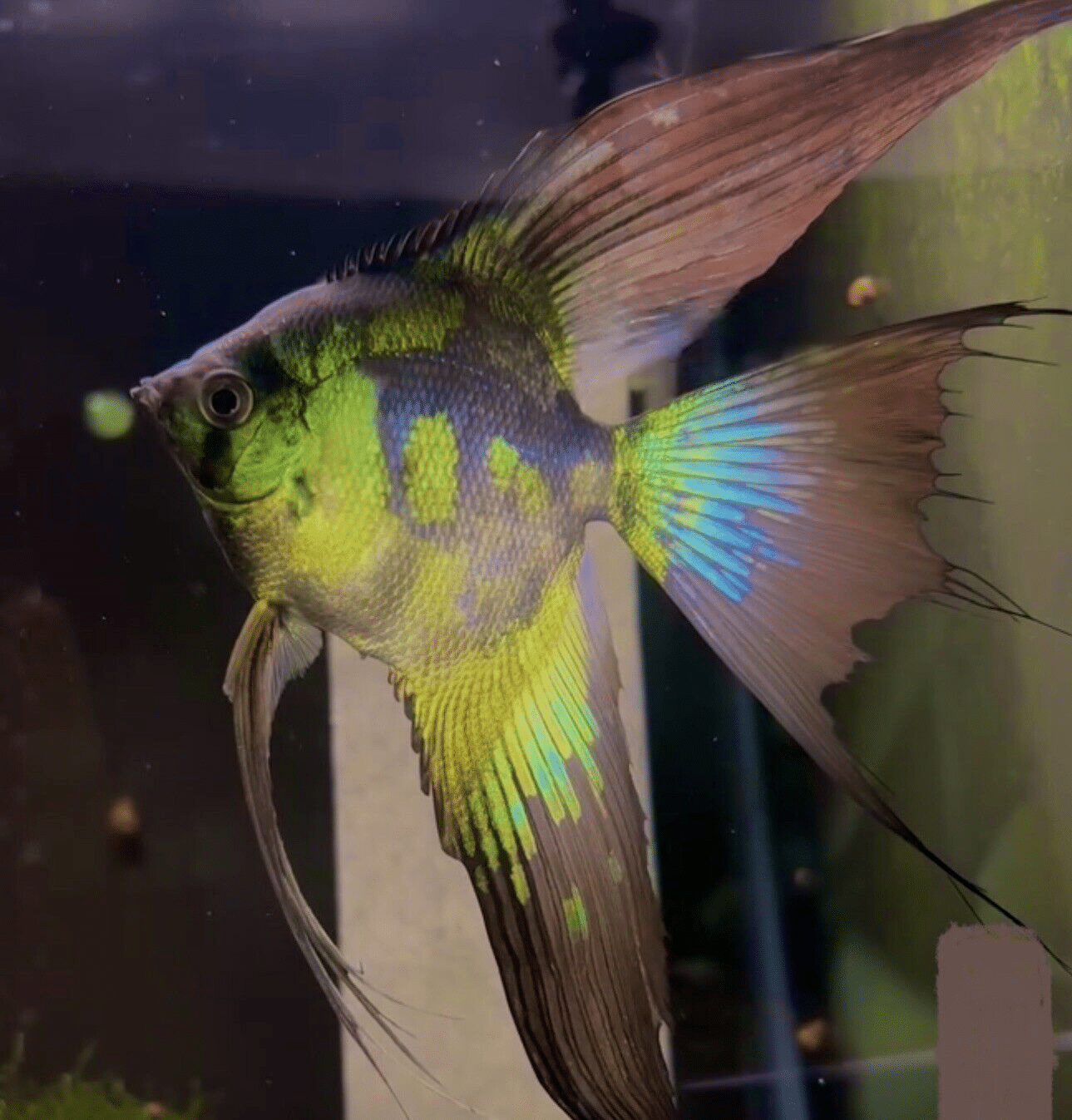
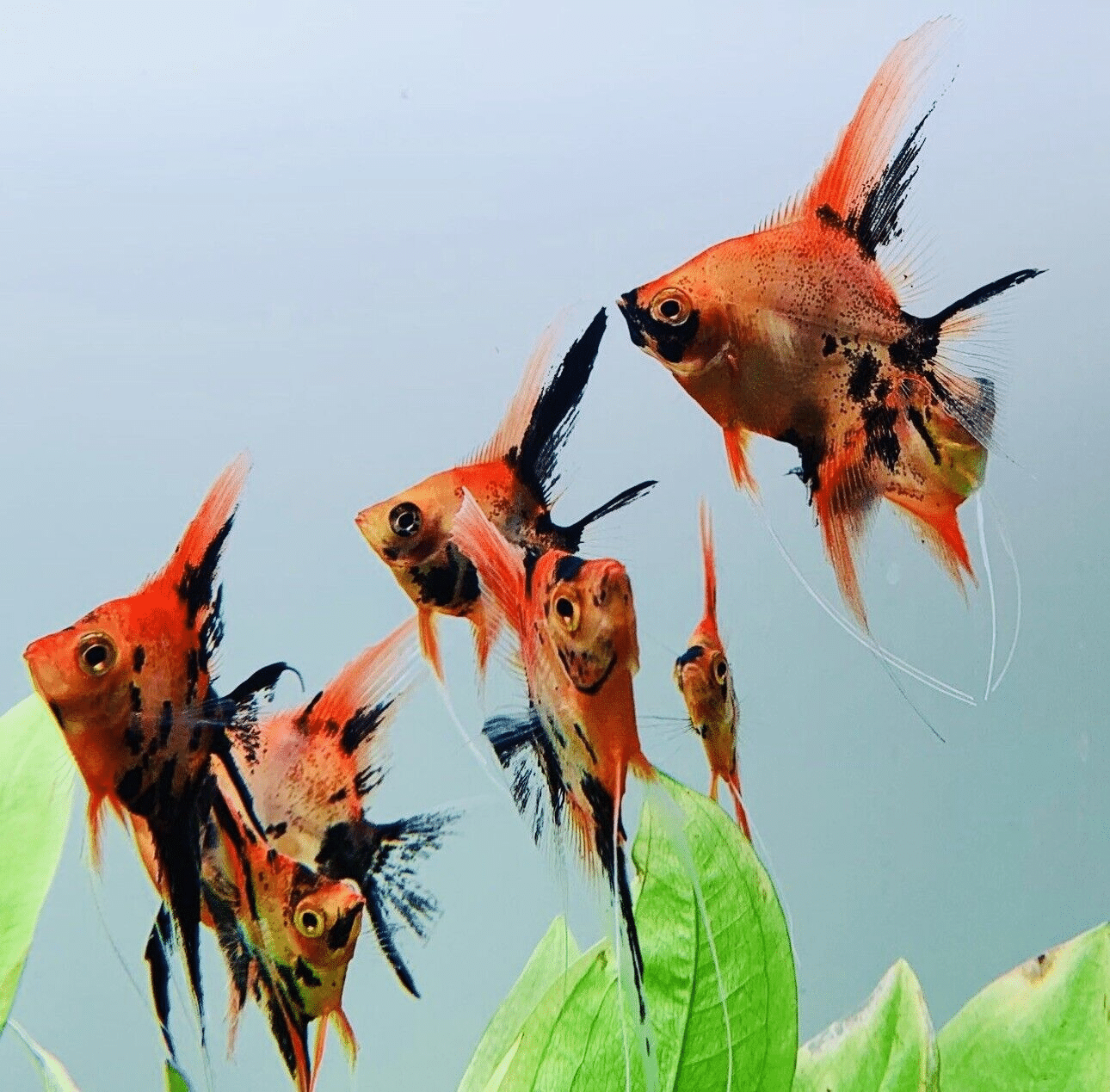
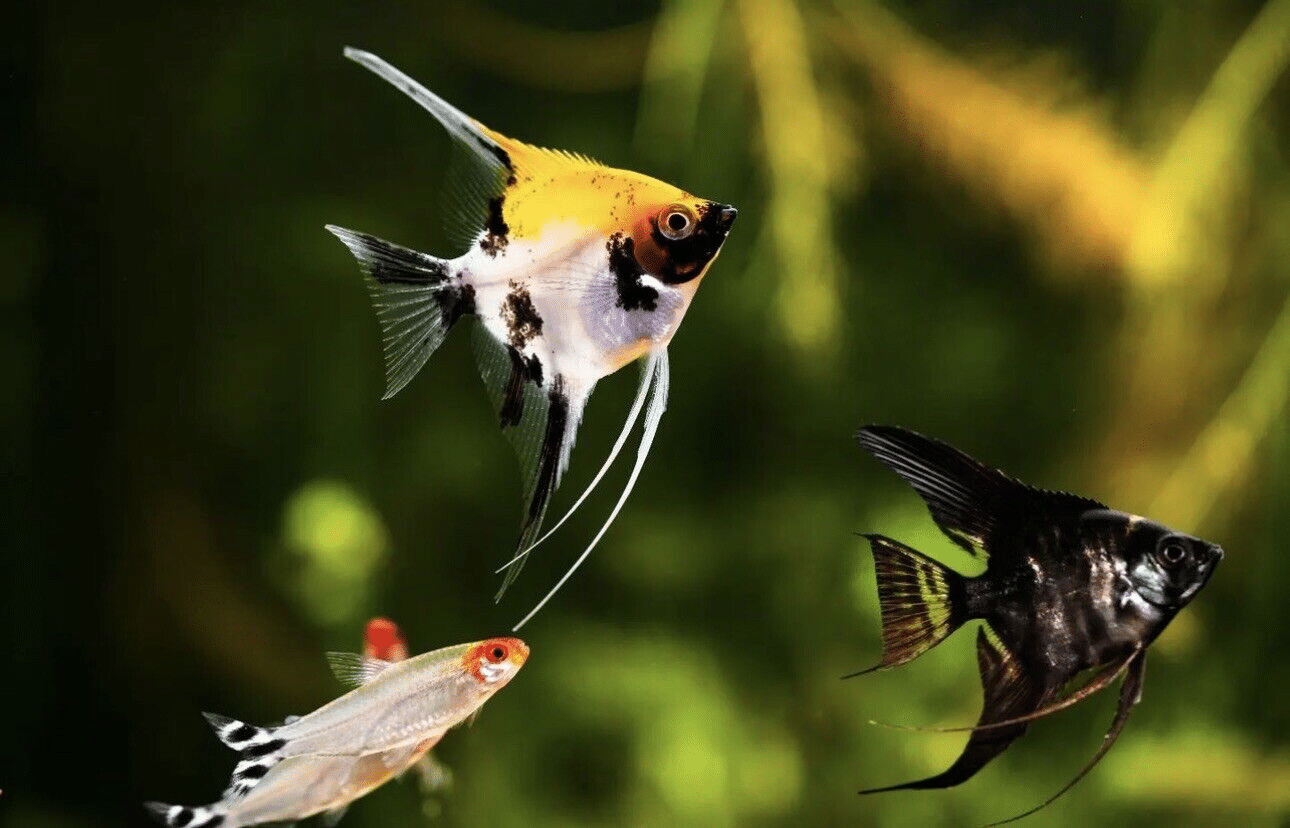

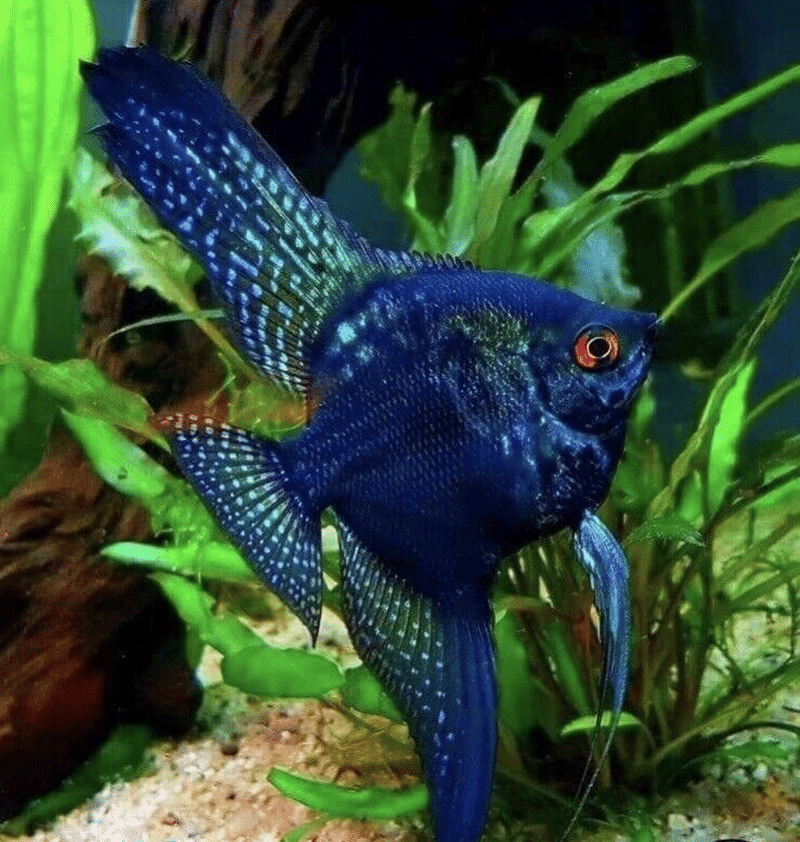
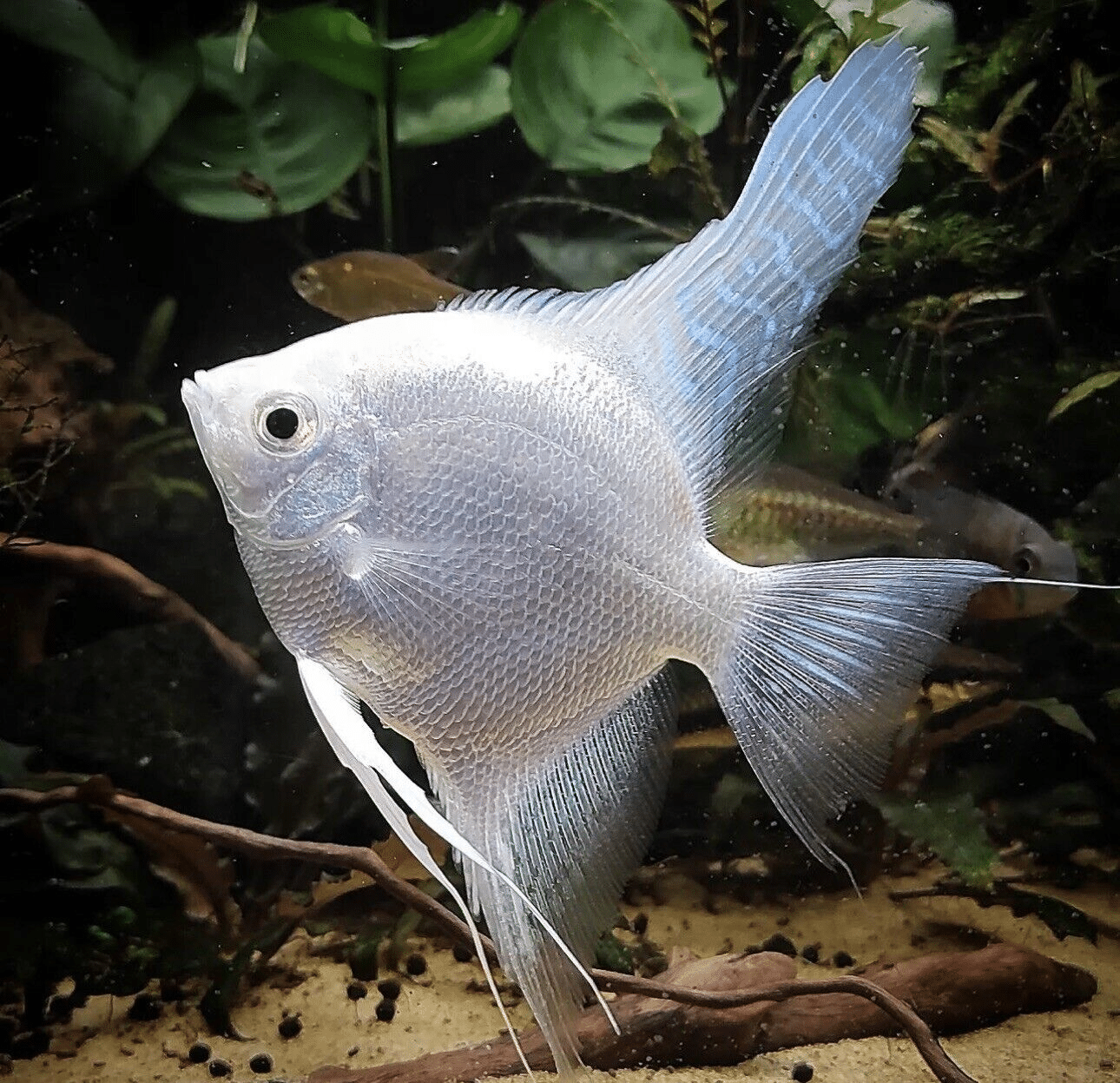
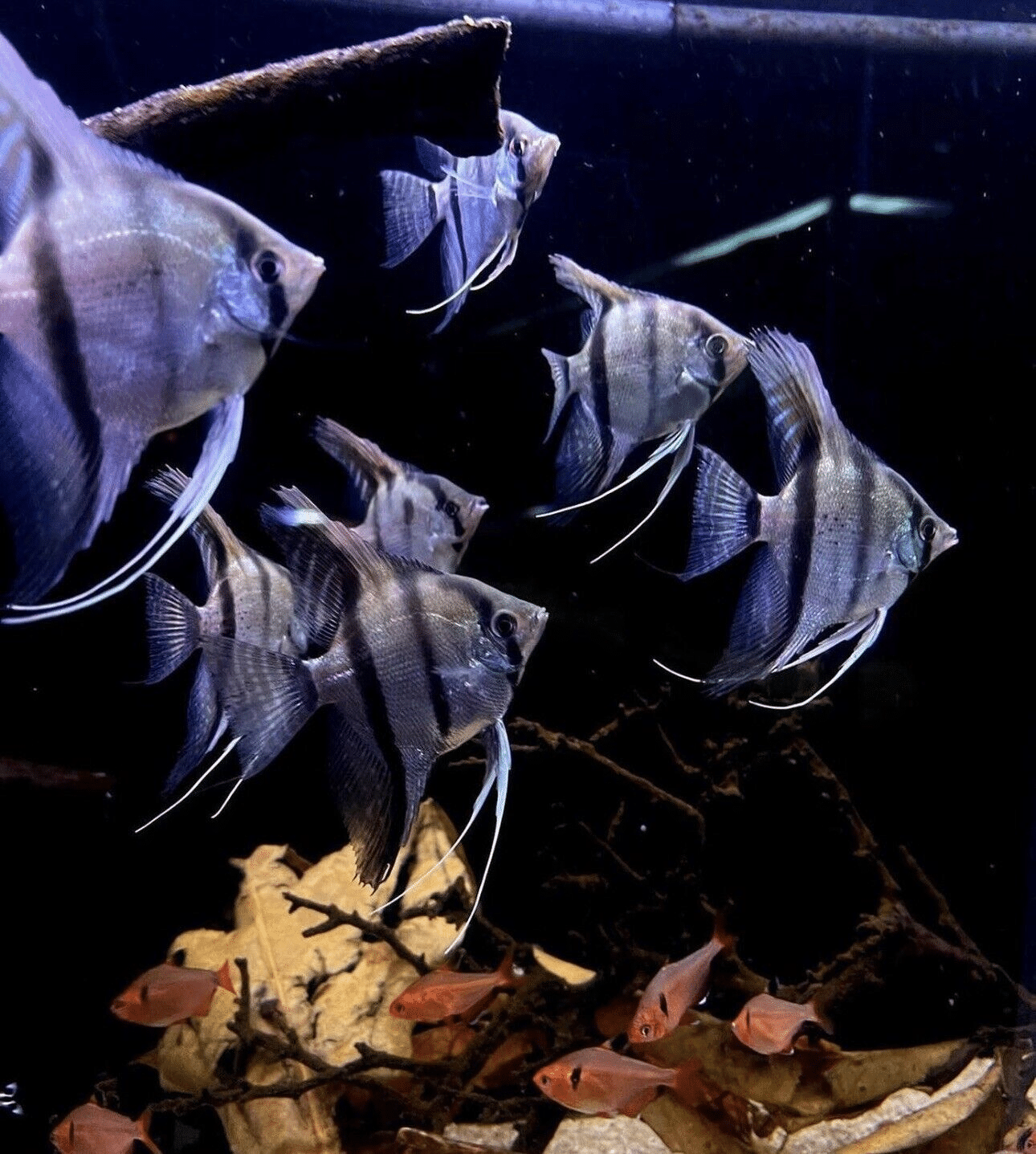
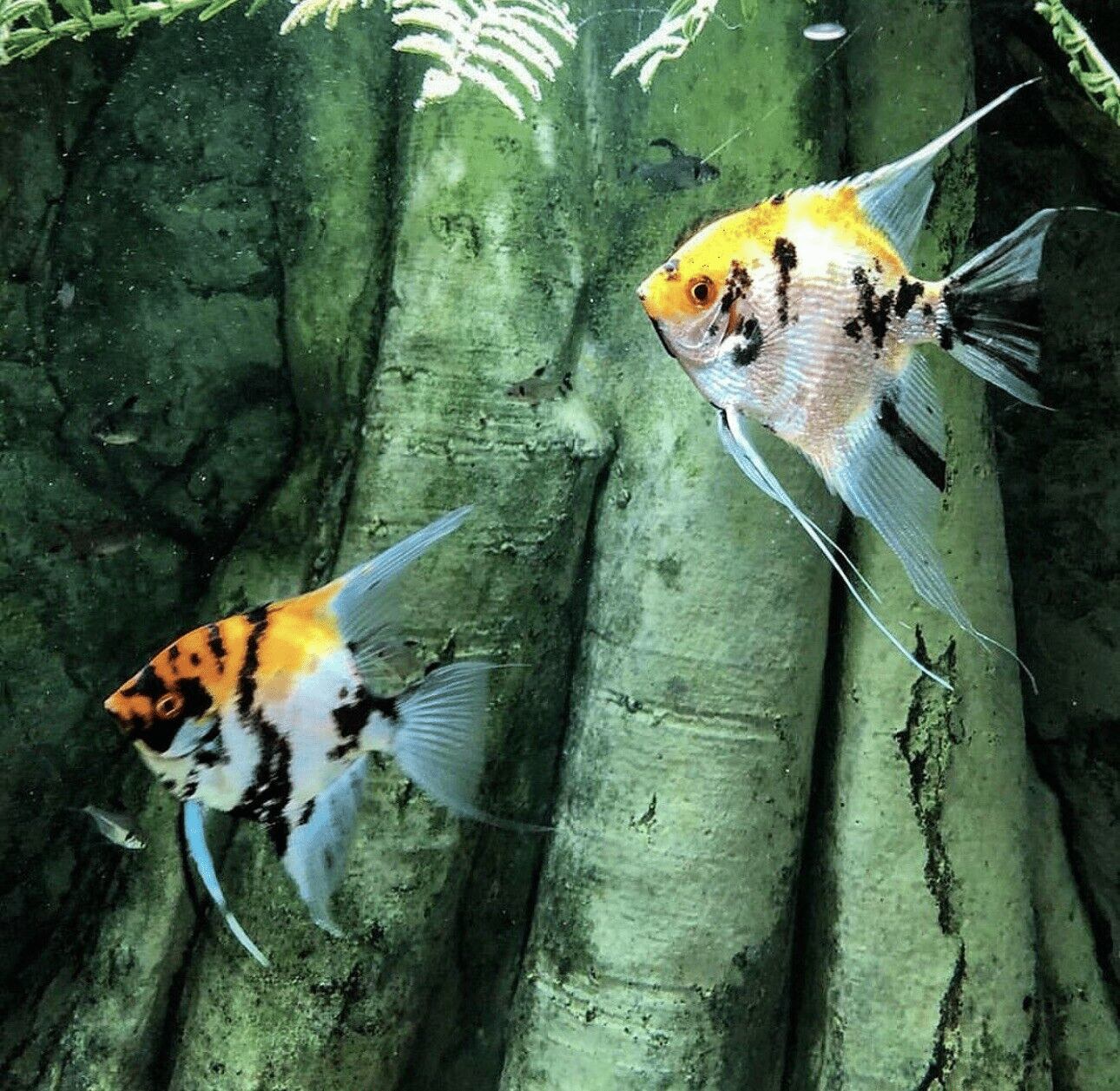
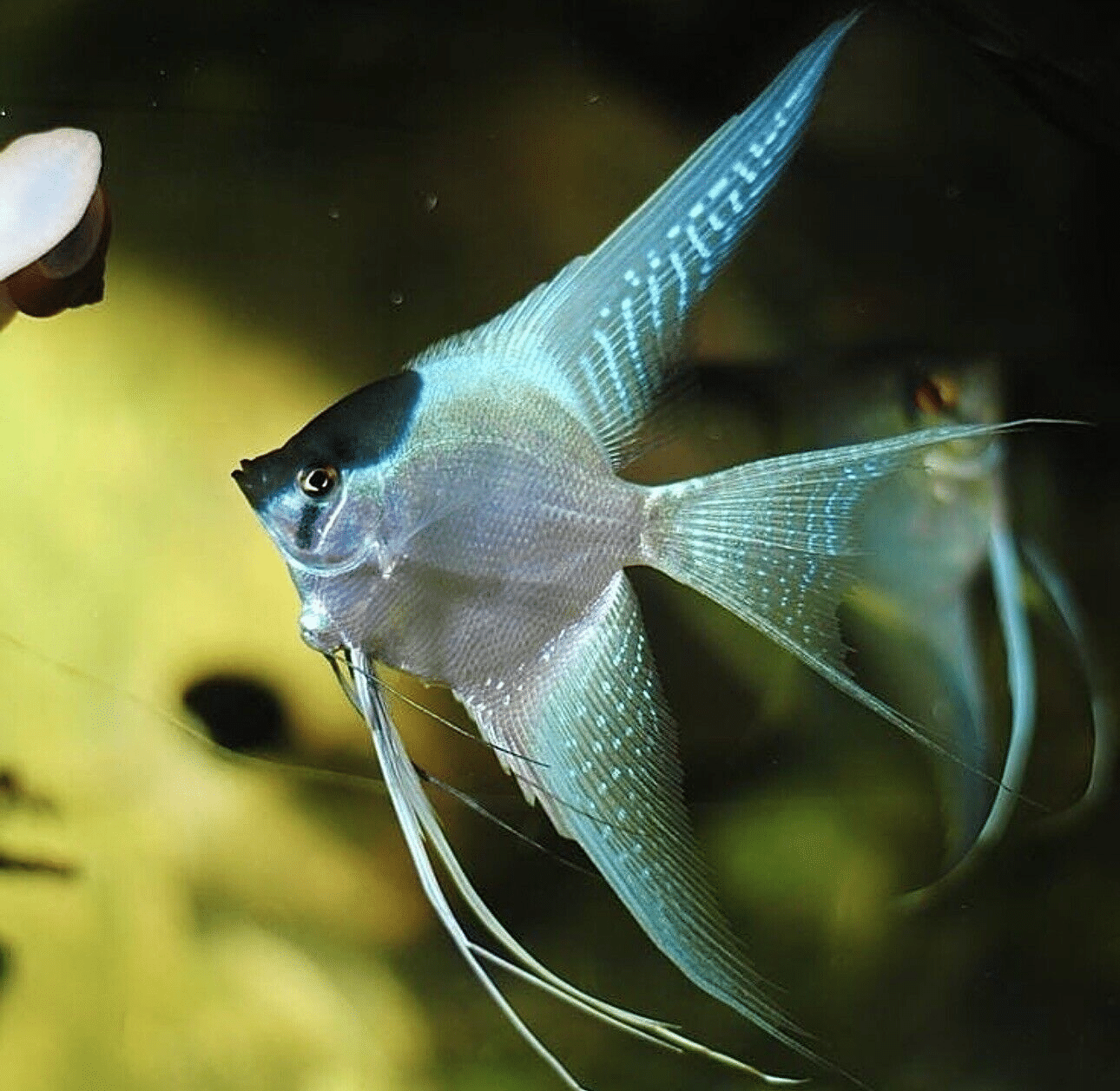
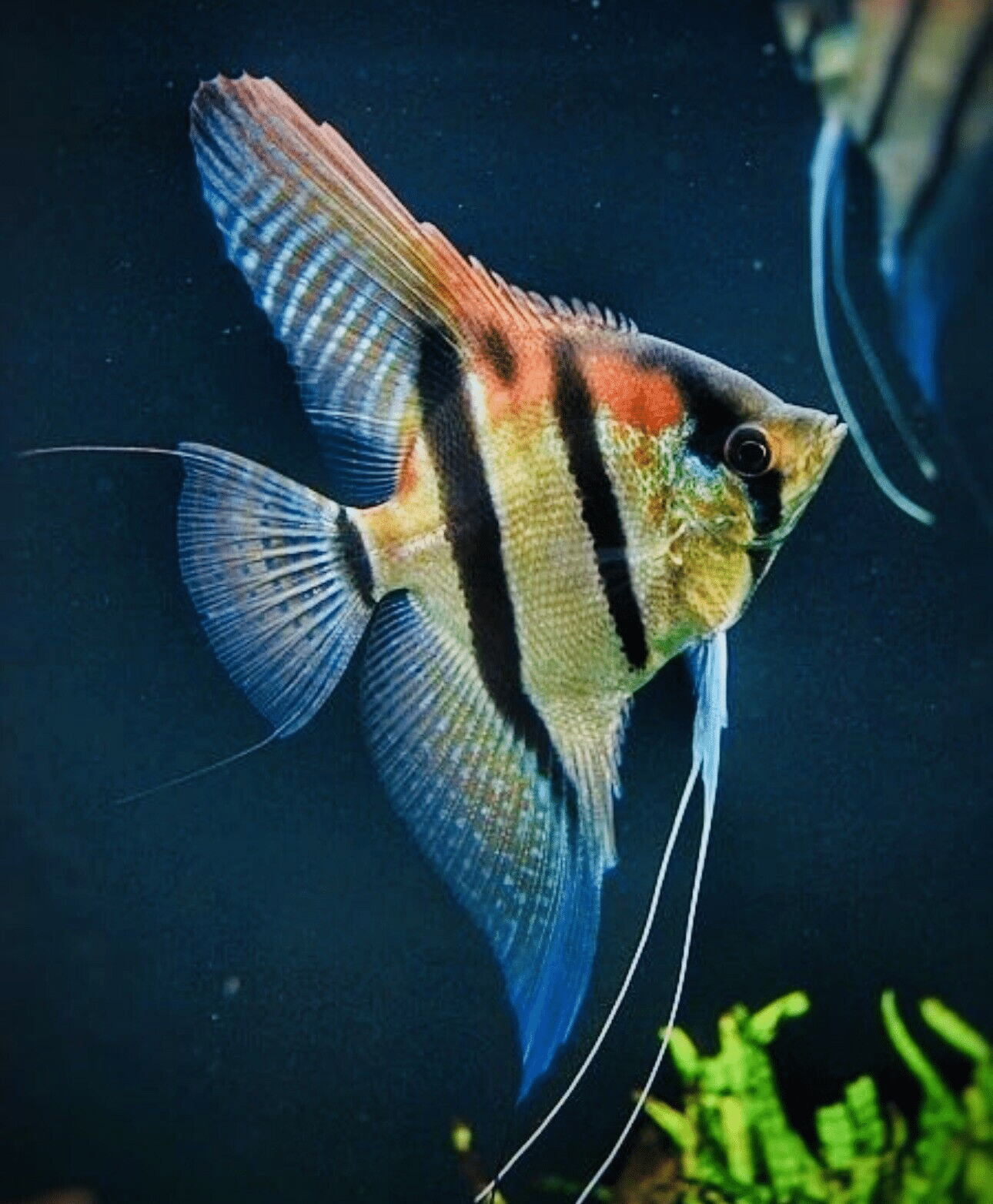


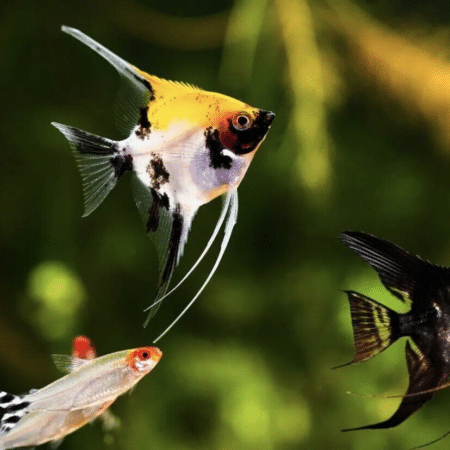


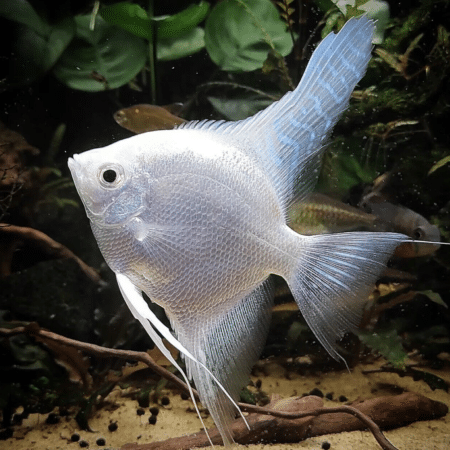

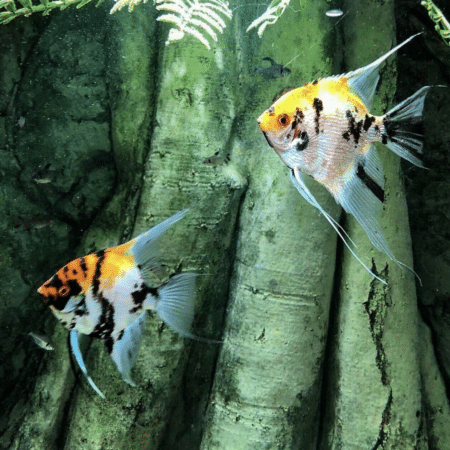
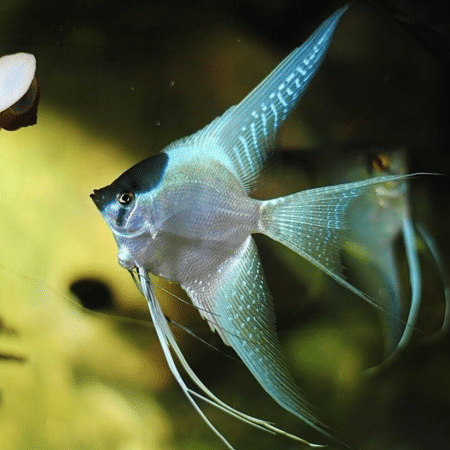

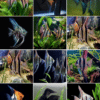
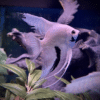








Emily Carter (verified owner) –
I recently purchased the Angel Fish Pterophyllum Scalare Mix, and I couldn’t be happier with my decision! As an experienced hobbyist, I’ve kept various freshwater fish, but these little angel fish, measuring just 1-2 cm, have stolen my heart. It’s been two weeks since they arrived, and they’ve acclimated beautifully to my 20-gallon community tank. Their colors are vibrant, and their playful personalities add so much life to the aquarium.
These angel fish are great for beginners and seasoned aquarists alike, as they’re quite hardy. Compared to other suppliers I’ve used, the health and vibrancy of these fish stand out significantly. I also appreciate that they arrived well-packaged and without any stress signs. My only minor concern was that one fish took a bit longer to adjust, but patience paid off!
If you’re looking to enhance your freshwater fish collection, I highly recommend these angelfish. They thrive in a community setting and bring an elegant touch to the tank. Just ensure you have a well-maintained environment, and you’ll see them flourish. I would absolutely purchase from this seller again!
Emily Carter (verified owner) –
I recently added the Angel Fish Pterophyllum Scalare Mix to my freshwater aquarium, and I couldn’t be happier! After a week of watching them settle in, these little guys (1-2 cm) have brought so much life to my tank. Their vibrant colors and graceful movements are mesmerizing. I love that they are perfect companions for my peaceful community tank, as they get along beautifully with my other fish. I previously tried some other breeds that were much more aggressive, but these angelfish have proven to be gentle and social. One thing to note is that they’re still quite small, so I’m keeping an eye on their growth and ensuring they get the right diet to thrive. I recommend these fish to anyone looking to enhance their aquarium with stunning, lively creatures. Just be sure to provide plenty of hiding spots and swimming space for them! Overall, I’m so excited to see how they grow and flourish in my fish tank. I will definitely buy again!